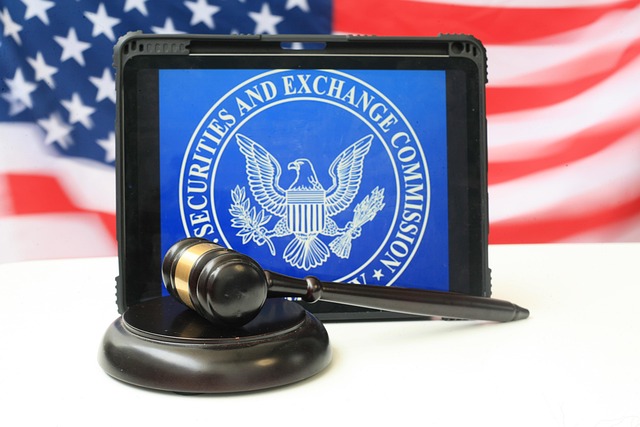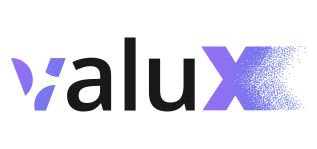Table of Contents
- Introduction
- Why Regulation is Essential in RWA Tokenization
- Global Regulatory Reforms in Digital Assets
- European Union: The MiCA Revolution
- United States: SEC and CFTC Reforms
- India: FIU-IND’s Regulatory Overhaul
- Dubai: VARA and DFSA’s Tailored Framework
- Singapore: MAS and the Payment Services Act
- United Kingdom: FCA’s Expanded Crypto Framework
- Conclusion
Introduction
The tokenization of real‐world assets is emerging as a transformative force in finance. By converting tangible assets into digital tokens on the blockchain, projects can open up fractional ownership, unlock liquidity, and eliminate many traditional intermediaries. However, with these innovative models come challenges—especially on the regulatory front. Recognizing these challenges, regulators around the world have embarked on major reforms that not only provide legal clarity but also foster investor protection and market stability.
Why Regulation is Essential in RWA Tokenization
Robust regulation is not simply a bureaucratic hurdle—it is the foundation for a secure and scalable tokenization ecosystem. Here are some key reasons why regulatory reform is vital:
- Legal Certainty and Investor Protection: Clear regulations provide a framework that protects both investors and operators from legal ambiguities. By establishing standardized rules, reforms reduce the risk of fraud and ensure that tokenized assets are managed transparently.
- Building Trust: Regulatory approval lends credibility to tokenized projects. When investors see that a project complies with rigorous standards, their confidence grows, paving the way for increased capital inflow and market stability.
- Risk Mitigation: Comprehensive AML, CTF, and KYC requirements minimize the risks associated with money laundering and fraud. This, in turn, reduces the potential for financial crises that could arise from unregulated markets.
- Facilitating Integration with Traditional Finance: Reforms that align digital assets with existing financial regulations enable traditional banks and financial institutions to participate in the digital asset ecosystem. This integration is essential for the mainstream adoption of tokenization.
- Global Harmonization: As different jurisdictions work toward similar regulatory goals, the global market for tokenized assets becomes more integrated. This reduces barriers to cross-border investments and enhances market efficiency.
- Future-Proofing the Industry: With rapid technological advancements, having a flexible yet comprehensive regulatory framework ensures that the industry can adapt to future innovations without major disruptions.
Suggested Read : How to tokenize your real-world assets?
Global Regulatory Reforms in Digital Assets
Major jurisdictions have taken decisive steps to reform the regulatory framework for digital assets. Rather than patchwork or ad hoc measures, these reforms represent a comprehensive rethinking of how tokenized assets should be classified, managed, and integrated into the broader financial system.
European Union: The MiCA Revolution
The European Union’s Markets in Crypto-Assets (MiCA) regulation is one of the most significant reforms in digital asset regulation. Designed to provide a unified framework across member states, MiCA offers legal clarity on issues such as market abuse, transparency, and consumer protection. Key elements of this reform include:
- Standardization Across Borders: MiCA establishes common rules for crypto asset service providers, ensuring that digital asset issuers and exchanges operate under a single set of guidelines. This “passport” system allows entities to offer services across the entire EU without needing to navigate a patchwork of national laws.
- Enhanced Consumer Protection: The regulation mandates detailed disclosures and risk assessments for token offerings. By requiring whitepapers and regular reporting, MiCA aims to build trust among investors and reduce fraudulent activities.
- Inclusion of Tokenized Assets: Although MiCA does not cover every digital asset type (excluding, for example, NFTs and certain security tokens), it sets clear standards for asset-backed tokens and stablecoins. This reform has paved the way for traditional financial institutions to consider tokenization as a viable avenue for growth.
- Implementation Milestones: With stablecoin rules having taken effect earlier and crypto service provider guidelines set for full enforcement from December 2024, MiCA is a landmark reform that has reshaped the European digital asset market.

United States: SEC and CFTC Reforms
In the United States, reform efforts have centered around clarifying the regulatory boundaries for digital assets and improving the oversight of tokenized securities and derivatives.
- SEC’s New Regulatory Guidelines: The U.S. Securities and Exchange Commission has undertaken reforms to better classify tokens as securities when they meet the criteria established by the Howey Test. This initiative, coupled with revised guidance and even the formation of a new crypto task force led by industry-favored voices such as Commissioner Hester Peirce, marks a shift from an enforcement-heavy approach toward one that emphasizes clear rules and registration pathways for token offerings.
- CFTC’s Expanded Oversight: The Commodity Futures Trading Commission has extended its jurisdiction to include more sophisticated crypto derivatives. By providing explicit regulatory guidance for bitcoin futures and other digital asset derivatives, the CFTC has helped reduce market uncertainty and enhance investor protection.
- Facilitating Bank Participation: A major recent reform was the reversal of restrictive guidelines like SAB 121, which previously discouraged banks from offering crypto custody services. This change signals an effort to bridge traditional finance with digital assets and foster a more integrated market.

India: FIU-IND’s Regulatory Overhaul
India has taken bold steps to bring virtual digital assets (VDAs) under a coherent regulatory framework:
- Registration and AML/CTF Compliance: The Financial Intelligence Unit (FIU-IND) now requires all VDA service providers, including crypto exchanges and tokenization intermediaries, to register as “reporting entities.” This reform ensures that these entities adhere to anti-money laundering (AML) and counter-terrorism financing (CTF) guidelines.
- Taxation and Disclosure: Alongside compliance measures, India has introduced reforms to tax crypto gains at a 30% rate and instituted tax deduction at source (TDS) on certain transactions. These reforms aim to close loopholes and increase transparency in the rapidly growing digital asset market.
- Improving Data and Monitoring: By requiring extensive record-keeping and robust KYC processes, FIU-IND’s measures help minimize anonymity and encourage responsible participation by all stakeholders.
Dubai: VARA and DFSA’s Tailored Framework
Dubai has positioned itself as a global hub for digital assets by implementing tailored regulations that balance innovation with investor protection:
- Dedicated Regulatory Bodies: The Virtual Assets Regulatory Authority (VARA) and the Dubai Financial Services Authority (DFSA) have introduced reforms that require licensing for tokenized asset projects. These bodies have created specific guidelines that help digital asset firms navigate compliance while fostering innovation.
- Streamlined Licensing Procedures: Dubai’s reforms have simplified the process for obtaining licenses, thus reducing administrative burdens and enabling a faster time-to-market for tokenized projects.
- Investor and Market Protection: The regulatory framework includes rigorous measures to prevent fraud and market manipulation, ensuring that both retail and institutional investors can participate with confidence.
Singapore: MAS and the Payment Services Act
Singapore is widely recognized for its forward-thinking approach to digital asset regulation. Recent reforms under the Monetary Authority of Singapore (MAS) include:
- Comprehensive Licensing for Digital Payment Token Service Providers: The Payment Services Act now requires service providers to obtain licenses and adhere to strict AML/KYC standards. This regulatory reform provides clear operational guidelines and fosters an environment where innovation can flourish without compromising security.
- Balancing Innovation and Protection: MAS has designed its regulatory framework to protect consumers while still encouraging technological advancements in blockchain and tokenization. The result is a robust ecosystem where both startups and established financial institutions can operate seamlessly.
- Investor Assurance: Through detailed reporting and mandatory risk management protocols, MAS reforms have elevated the standards for transparency and accountability in the digital asset market.
United Kingdom: FCA’s Expanded Crypto Framework
In the United Kingdom, regulatory reforms have been pivotal in transforming the crypto space:
- Market Abuse and Transparency Rules: The Financial Conduct Authority (FCA) has implemented reforms that extend existing market abuse regulations to cover crypto-assets. New guidelines require crypto trading platforms to maintain strict disclosure and reporting standards, thereby protecting investors from fraudulent activities.
- End-to-End Regulatory Framework: The FCA is in the process of developing a comprehensive framework that covers the entire lifecycle of tokenized assets—from issuance to trading and custody. This holistic approach aims to reduce regulatory uncertainty and attract both domestic and international players.
- Facilitating Global Market Access: By harmonizing regulatory standards across the UK, the FCA has made it easier for tokenized asset providers to expand their operations globally, thereby reinforcing the UK’s position as a leading financial hub.
Conclusion
The tokenization of real-world assets is poised to transform the global financial landscape, but its success hinges on a robust regulatory foundation. Landmark reforms—from the EU’s comprehensive MiCA framework and the U.S. SEC’s and CFTC’s clarifications to India’s FIU-IND overhaul, Dubai’s tailored licensing models, Singapore’s forward-thinking Payment Services Act, and the UK’s evolving crypto framework—are paving the way for a secure, transparent, and scalable digital asset market.
By embracing these key reforms, innovators and investors alike can navigate the complex regulatory environment with confidence. As the regulatory landscape continues to mature, the focus must remain on striking the right balance between fostering innovation and protecting market integrity. In a world where tokenized assets are set to redefine traditional finance, these reforms are not just regulatory requirements—they are the pillars on which the future of digital finance will be built.








